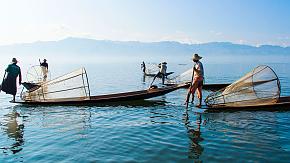Close to Myanmar: One-Leg Rowing of Inle Lake
"Having traveled so many miles of Southeast Asia, Myanmar impresses us most," said some travelers whom our travel specialists met during their inspection trip to Myanmar. "Life here is simple, so do people. We like it."
On the trip to Myanmar, our travel specialists had a great time chatting with some travelers from different countries and have known that they are fascinated with Pagan of natural smells and the pagodas in various shapes all over, as well as the serene Inle Lake with no lands, no cars. The local Intha live in the floating houses for generations, earn their life by fishing. When it comes to fishing, one-leg rowing, a traditional fishing method, it is worth mentioning. Although people here have noisy diesel motors recently, the traditional fishermen still use the leg rowing technique, which is rare in other parts of Myanmar or even the world.
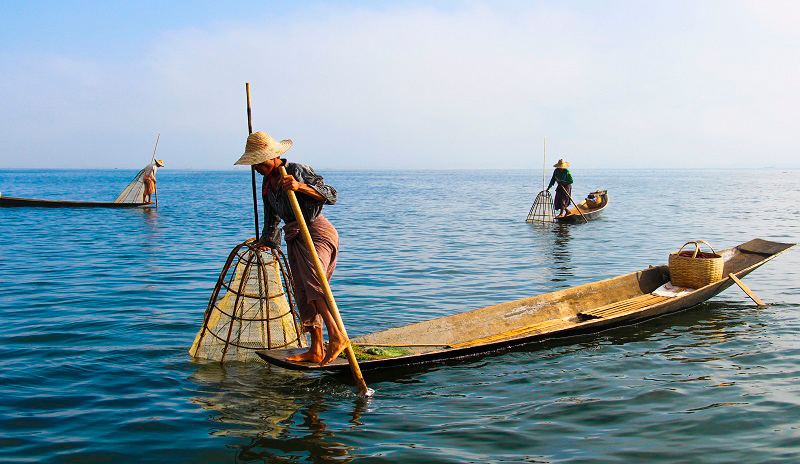 The one-leg rowers are catching fish
The one-leg rowers are catching fish
What's the real life of Leg Rowers
Take a long boat in the Inle Lake, a mountain lake in the east of Myanmar, some fishermen who expertly propel their boats using one leg wrapped around a single oar, and set hands free to hold a cone-shape net shuttle back and forth over the lake. In the end of fishing, they return home along the lake, sometimes across in a number of floating strip fields where local women are weeding, watering, and picking the vegetables, and sometimes pass by floating markets and wooden houses scattered in the lake. Look! A flock of sea gulls are flying close to the water surface, as if say hello to people. As get home, they talk with families patiently, have a simple dinner with no wifi, no iPhones. That's the real life of these fishermen in the Inle Lake.
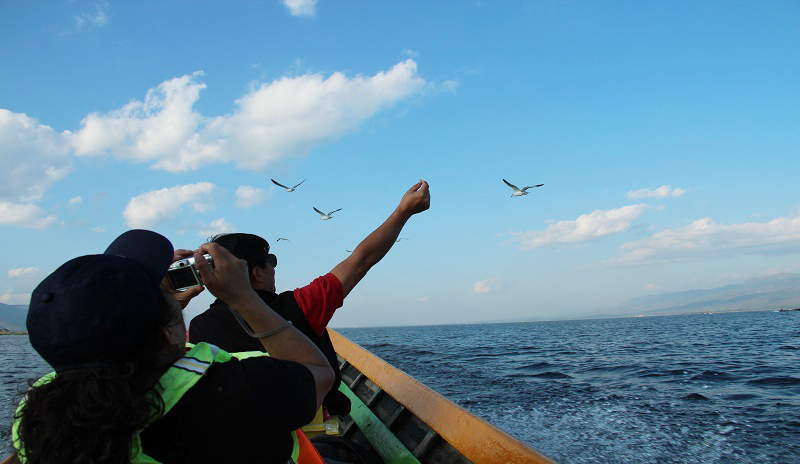 A flock of sea gulls are flying into the water surface
A flock of sea gulls are flying into the water surface
Why row a boat by using one leg
You might be curious about why the fishermen row a boat using one leg rather than a hand, right? Exactly, so do we. Some travelers once asked the local fishermen why they propel their boats through this technique of leg-rowing. "Reeds thrive in the Inle Lake, and only standing can you see if there are any fish under the reeds. Legs are more powerful than hands, helping speed up the boat and free hands for fishing" as they recalled.
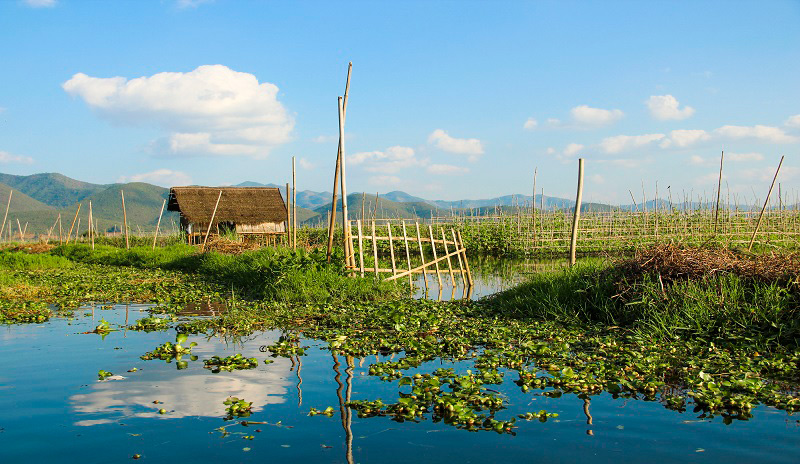 The floating strip fields
The floating strip fields
However, according to a legend, the ancestors of Intha were the Tavoy people before the 12th century. Defeated by enemies, they were exiled to the Inle Lake region surrounded by mountains. They with indomitable perseverance survived and built their characteristic floating wooden houses. To make a living, they cultivated the strip fields built on stilts, planted fruits and vegetables above the fields where a group of fish gathered, abundant in aquatic products. Gradually, fishing became one of the major means of life. In order to fish, meanwhile, keep the boats going, these smart ancestors thought of a good idea that made a balance of them. That was propelling the boats via one of their legs, and handling the fish nets by hands. As time goes by, this original fishing method was passed down as tradition from generation to generation for thousands of years. It's said that Intha learned fishing from the age of 13 and generally to 75 years old.
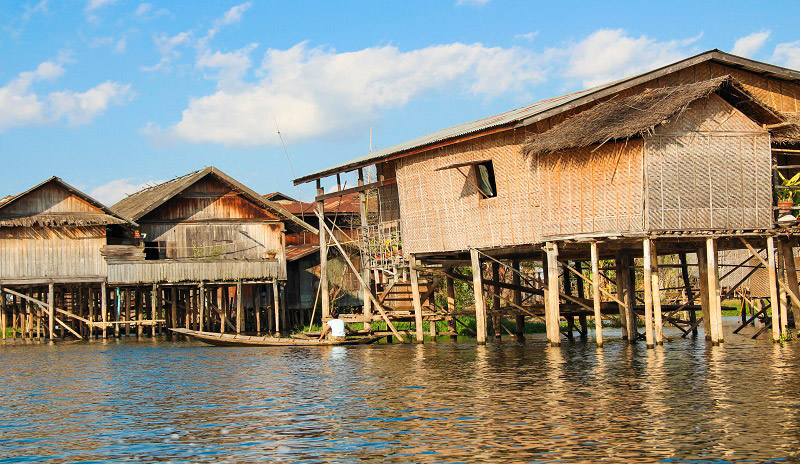 The floating houses built on stilts
The floating houses built on stilts
How do the Leg Rowers row and fish
The Intha had lived the lake since an early age, they were good at rowing. With one leg standing on the boat deck, and the other wrapping around the oar that tucked firmly under their arms, the Intha fishermen hold a cumbersome fish net of cone-shape in one hand.
Do you see it? It's a special fishing tool made of fishing net in local area. As many large bubbles rise from under the lake, fishermen rely on their experience to determine that there is a big fish. At this point, this conical fish net will be quickly plunged down into the water, and the big fish will be trapped in the middle of it. Fish would like to get away from the hole of the top, unfortunately, they are trapped by the outer net again. This kind of method is more applicable to catch big fish as small fish can easily get away from the bottom of fish net. So, how about the small fish?
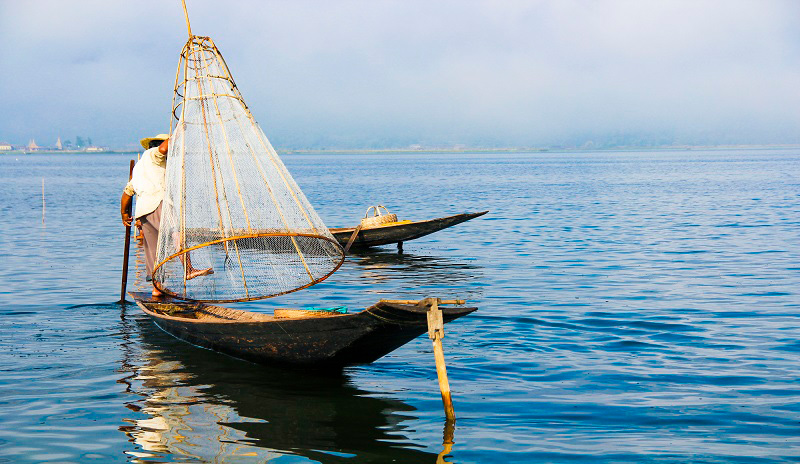 A cumbersome fish net of cone-shape
A cumbersome fish net of cone-shape
If you are lucky, you maybe have an opportunity to see the "beating" scene in the morning or evening. Fishermen beat the top of water with sticks strongly, arousing waves of spray. According to the local fishermen, this action is to drive the timid small fish into their nets.
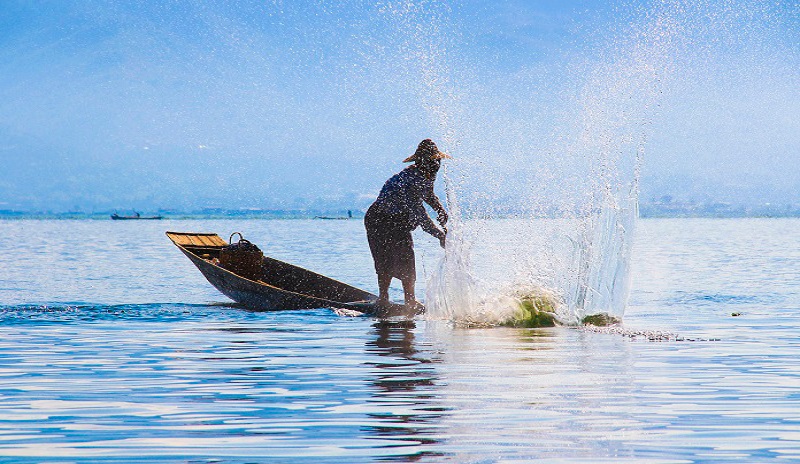 A fisherman is beating the water with stick to drive small fish into nets
A fisherman is beating the water with stick to drive small fish into nets
Instead of rowing boats by hands, this unique technique of one-leg rowing is scarce in many parts of the world. These fishermen catch fish in the vast Inle lake every day, with no luxury facilities but to have simple smile and a peaceful mind. It's believed that you'll be deeply touched if you come to Inle Lake. For any inquiries or questions, feel free to contact us.
Related Posts You May Like
What Our Clients Say
Explore the latest verified reviews of Odynovo's travel services on Tripadvisor, Google, Trustpilot, Product Review and more trusted platforms.



